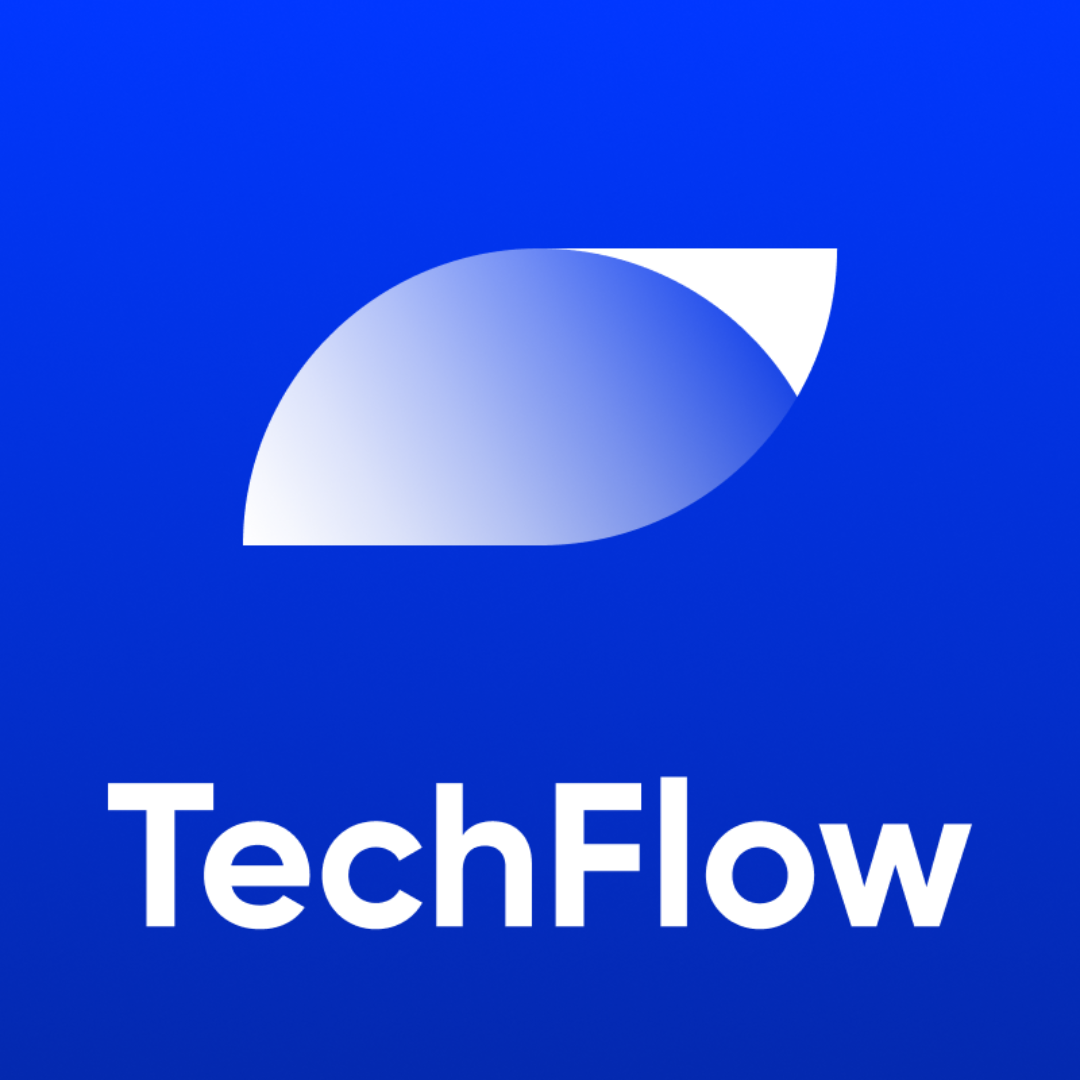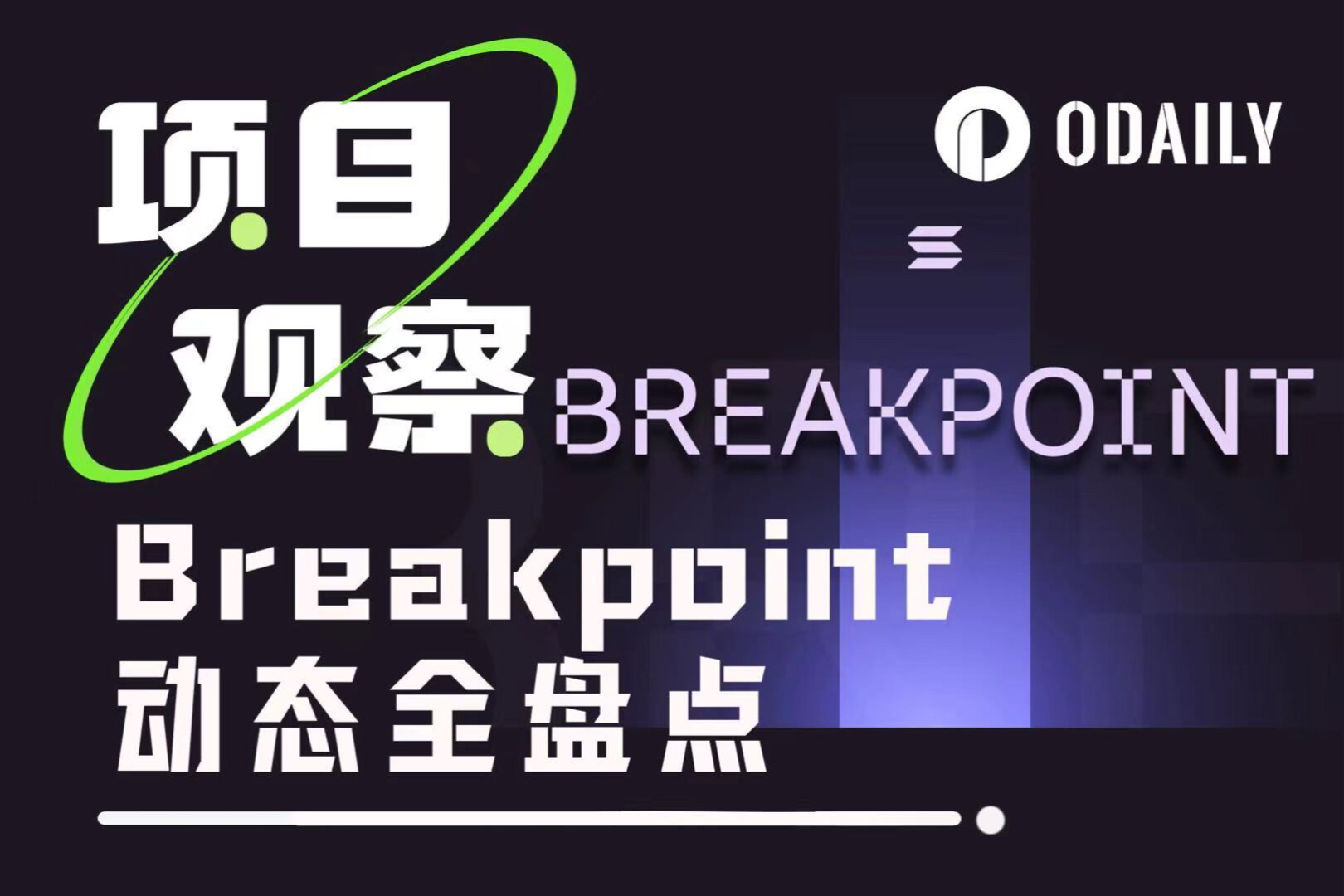9 AI and infrastructure projects worth watching
Original author: NAIROLF
Original translation: TechFlow

2024 is the year of infrastructure and artificial intelligence.
While Meme Coin has risen many times, making many crypto players rich, the space has also seen multiple major innovations in other areas. Ethena has successfully reached a supply of over $2 billion, becoming one of the biggest innovations in the DeFi space. SSolana and Sei democratize parallel execution, allowing these L1s to achieve extremely high throughput in production. Eigenlayer is about to release its highly anticipated token after introducing re-staking.
The crypto market never stops, and neither does innovation. Infrastructure and AI will be in the spotlight in the coming months, so let’s take a quick look at 9 promising projects in both fields.
AI
ZeroGravity
ZeroGravity, also known as 0 G Labs, is defined as the first modular AI chain. Its goal: to take data availability to the next level. As you may have realized, training AI models requires a lot of data. If our goal is to truly integrate AI on-chain, a high-speed and highly scalable data availability solution becomes essential. ZeroGravity aims to achieve this scalability by splitting the workflow of data availability into two channels: data publishing and data storage. According to one of the founders of 0 G, this model enables ZeroGravity to reach a data throughput of 50 Gbps, while competitors have a data throughput of 1.5 MBps. The concept has attracted considerable attention, allowing the project to raise $35 million in a pre-seed round from major VCs such as GCR, Hack VC, Delphi Digital, etc.
Nim Network
NIM Network is the first of the RollApps to go live on the dymension mainnet. It’s safe to say that their plans are massive! NIM aims to be the ultimate environment for crypto-native and fun AI games. To achieve this ambitious goal, the project is focused on developing AI gaming agents. While the term may sound intimidating and broad, AI gaming agents are virtual players that mimic human controls. The main purpose of these agents is to enhance the immersion of the gaming experience for human players like you and me. Through NIM, anyone can use, develop, or deploy AI agents, permissionless, and later other network participants can leverage and improve these agents in their applications. Eventually, these agents will be monetized and their owners will collect the revenue generated. With the exponential growth of web3 gaming, AI agents may play a decisive role in making these games as entertaining as traditional games like Fortnite, FIFA, etc.
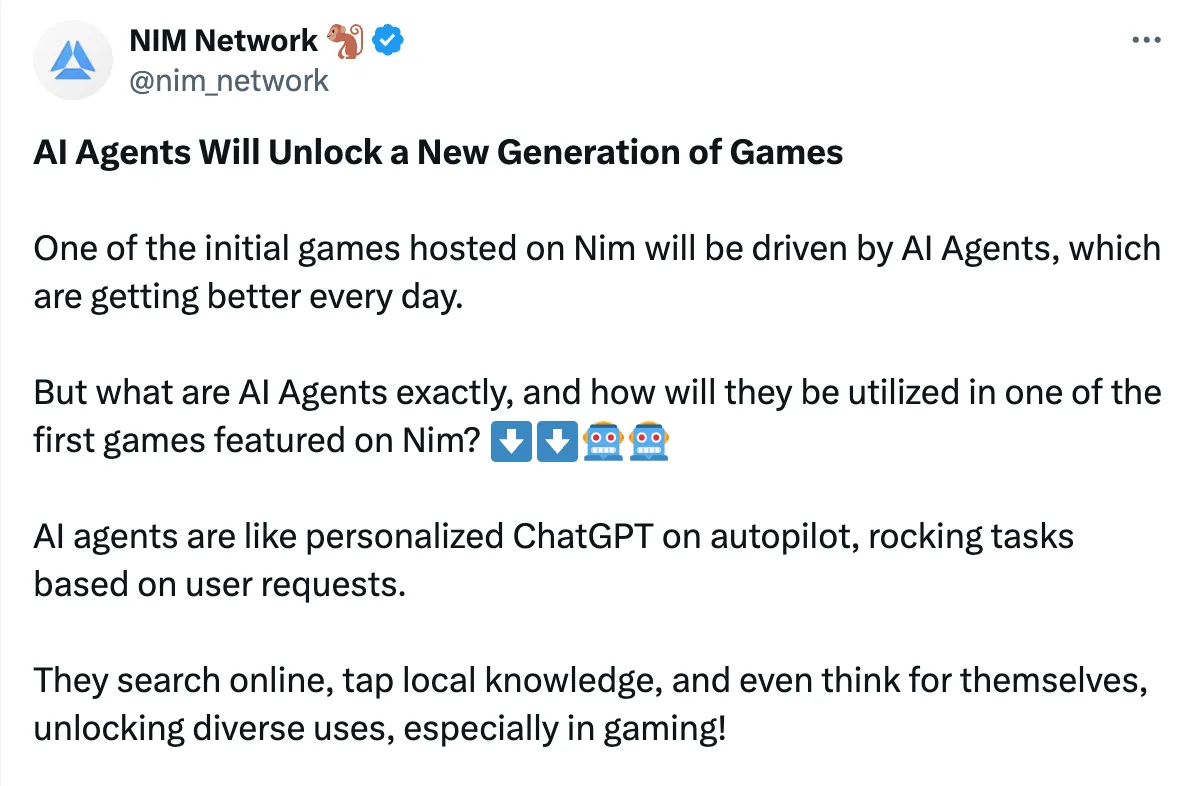
Talus
Talus is a high-performance, parallelized blockchain powered by the Move programming language, a variation of Sui. It integrates a native AI stack that facilitates the creation of AI smart agents - programs designed to run autonomously, such as robots. Talus provides an optimized environment for developers to easily build and deploy distributed AI services with flexibility. Within Talus, there will be a marketplace where smart agents, resources, and services can be represented, utilized, and traded in a permissionless and verifiable manner. In addition, Talus will be interconnected with other blockchains through the Inter-Blockchain Communication (IBC) protocol, enabling smart agents created on Talus to interact with and utilize data or assets across multiple chains.
infrastructure
Movement
Movement is building an Ethereum L2 using MoveVM, a virtual machine with Move as the programming language. Move was originally developed by Facebook for its Libra/Diem blockchain project but was abandoned due to regulatory issues. However, the language itself is still active and gaining more and more attention in the space, especially with multiple L1 blockchains adopting Move, such as Aptos, Sui, and 0 l Network. The core idea behind Movement is to bring this technology to Ethereum by building the first L2 with MoveVM. This L2 will use Celestia as its data availability layer and will be compatible with EVM. Thala and Echelon projects, which are already running on Aptos, have announced that they will deploy on Movement. Worth watching!
Particle Network
Particle Network is a modular L1 powered chain abstraction. With hundreds of Rollups and chains emerging, it’s becoming increasingly difficult to manage different wallets, assets scattered across various platforms, and the necessity to hold gas tokens on each individual chain. This problem is often referred to as siloed ecosystems: each chain hosts different dApps and uses different gas tokens, making movement from one chain to another difficult and inefficient, especially for newcomers. Chain abstraction aims to alleviate this complexity by creating an experience where users feel like they are using a single, monolithic chain. Essentially, users won’t even know which specific chain they are interacting with. No need to worry about bridging enough gas tokens to this new chain. Particle Network has already taken care of that for you. It acts as a universal settlement layer through universal accounts and universal liquidity, designed to make most of the infrastructure invisible to users. Personally, I foresee chain abstraction to be the next logical step from modularity to logic, and both concepts are designed to go hand in hand to meet the challenge of introducing the next billion users to crypto.

Espresso
Espresso defines itself as a shared ordering market and finality device connecting L2. In simple terms, Espresso acts as a sorter layer that multiple Rollups can use simultaneously. This means that the block ordering process shifts from a centralized sorter typically run by a Rollup team to a permissionless network of nodes operating the Espresso Sequencer. This model provides three main advantages: scalability, decentralization, and interoperability. Through its HotShot consensus, Espresso can guarantee fast transaction finality and high throughput. With sorters shared between different Rollups, cross-chain messaging and bridging between L2s become cheaper, faster, and more secure. Last month, Espresso raised an additional $28 million in a Series B round led by a16z.
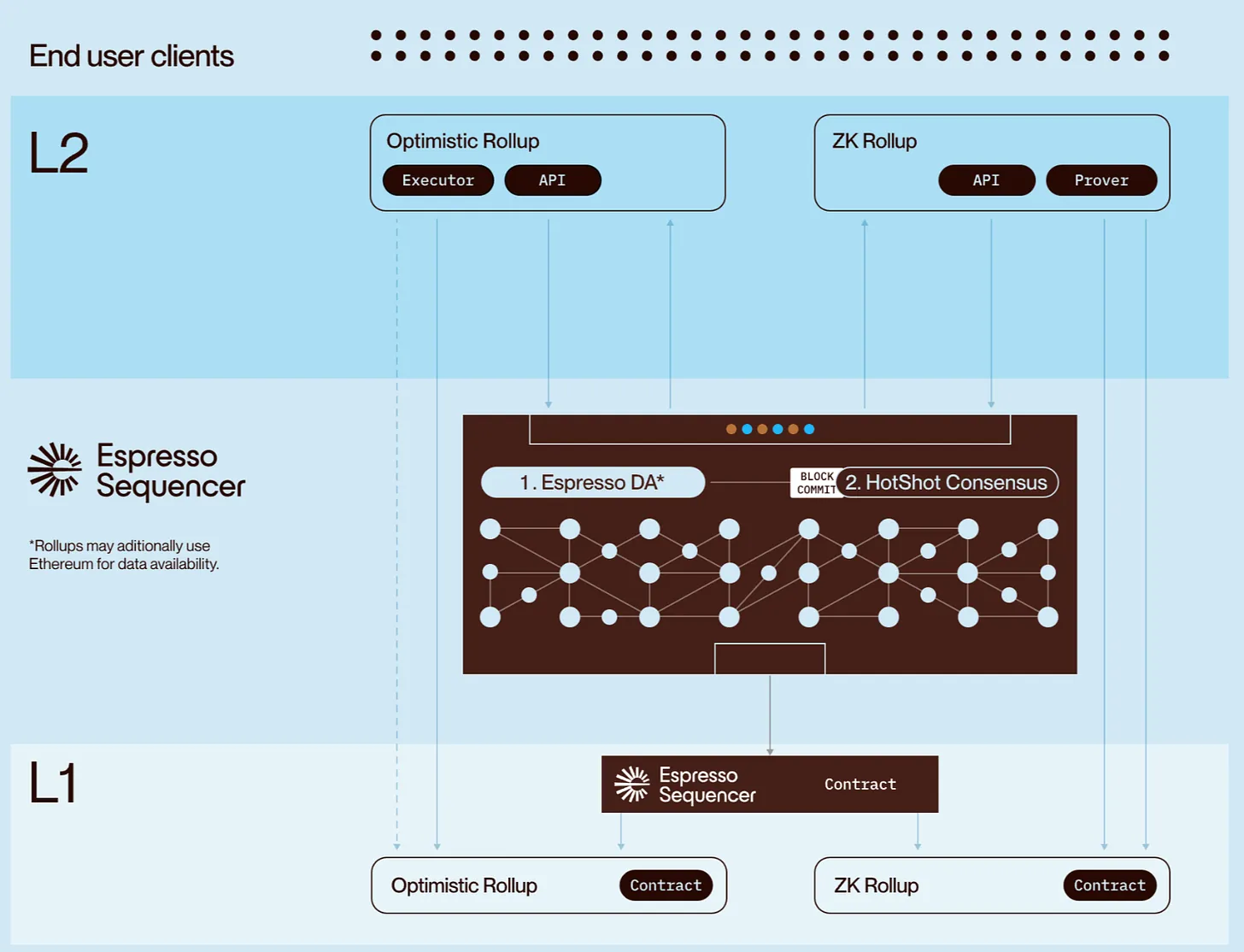
Lava Network
Lava Network provides the first modular data access layer designed to expand access to any blockchain. The problem Lava solves is infrastructure fragmentation. Accessing data from other chains quickly becomes a challenge for developers building cross-chain applications, especially if it goes beyond the scope of the EVM ecosystem. To overcome this pain point, Lava is building a powerful, decentralized, and unified approach that allows developers to easily retrieve data from every supported chain. Currently, Lava provides an RPC service that routes requests to the best available provider. While RPC only enables applications to get basic data from the blockchain, Lava can also integrate more specialized API modules to retrieve specific (more complex) blockchain data. Lava is currently running a points program that may lead to some form of airdrop.
NodeKit
NodeKit is a composability layer that allows blockchains to unlock synchronous communication. The project recently launched Javelin, a block builder that facilitates atomic synchronous composition between Rollups. With Javelin, cross-Rollup transactions can be executed atomically within a block, allowing two different blockchains to communicate within a single block. This capability opens up many possibilities, such as instant bridging between L2s. Typically, bridging across Rollups takes a long time due to the different confirmations required. However, with NodeKit, tokens are destroyed on the first L2 and minted on another L2 within the same block. NodeKit has received additional funding from the a16z Crypto Startup Accelerator after its first Pre-seed round led by Borderless in December 2023.
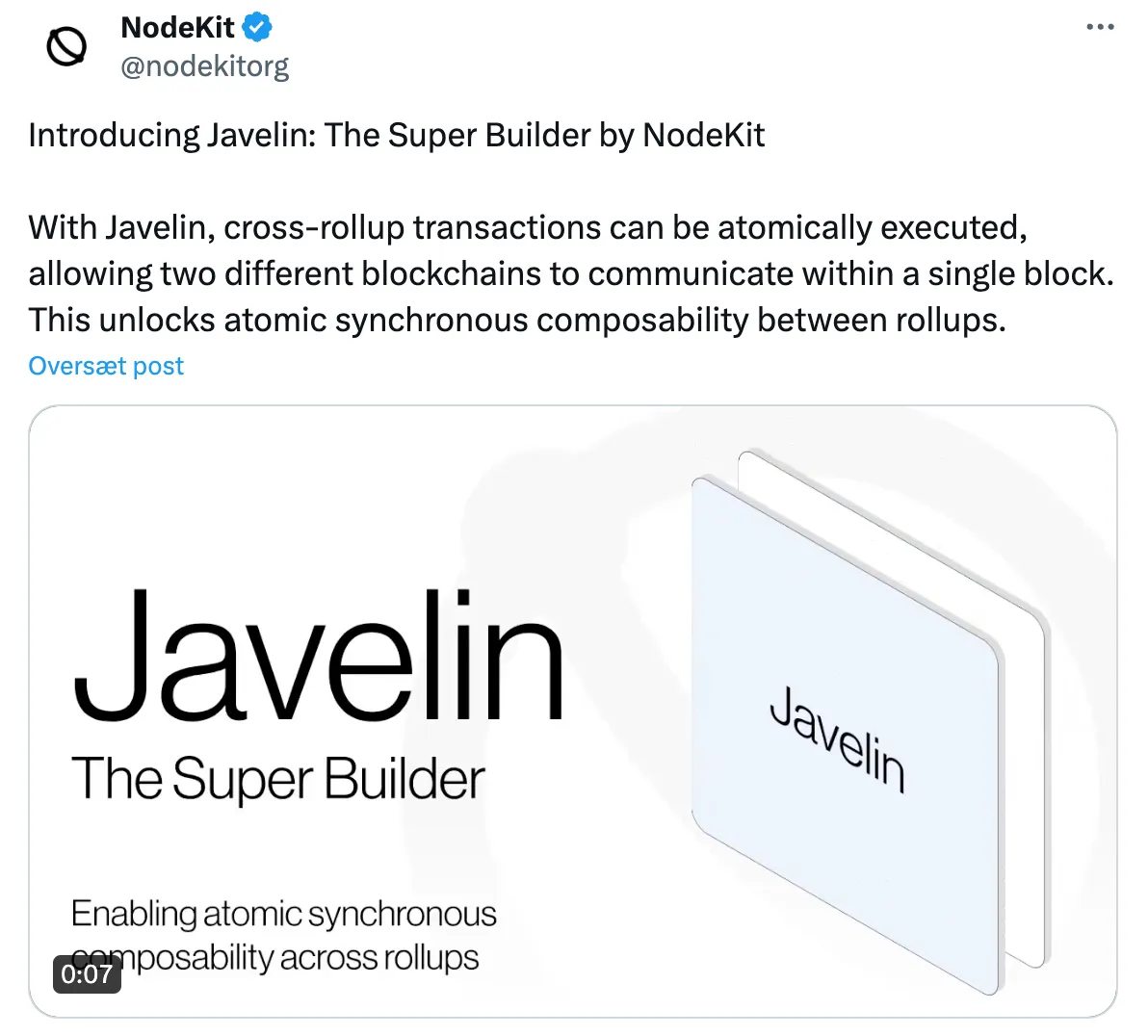
Caldera
Caldera is a Rollup as a Service (RaaS) project. Specifically, it enables users to deploy a Rollup in just a few clicks. The process is simple: choose a stack, select a data availability layer and gas token, click deploy, and that’s it! Personally, I’m sure many dApps will transition to the Lisk model once they find product-market fit. This allows applications to overcome the limitations of the L1 they are built on and immediately improve scalability and customizability. This is exactly where the value proposition of RaaS lies: it provides easy and fast deployment for a project’s chain. The best part? Caldera manages all the infrastructure for you, including the blockchain node itself and auxiliary infrastructure (such as indexers and block explorers). This business model has also attracted many projects such as Manta Pacific, Treasure, and Animoca Brands, and is expected to continue to grow in the coming months and years.
in conclusion
The crypto space never stops building, which is exactly why we love it. These nine projects represent just a small sampling of what we think are worth watching in the AI and infrastructure space.

